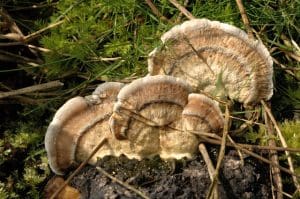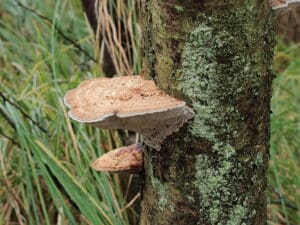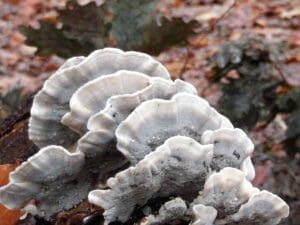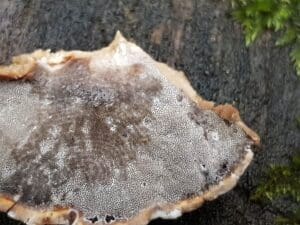Smokey Bracket / Spring / Summer / Autumn / Winter / Edible
The Smokey Bracket (Bjerkandera adusta) is a subtle yet fascinating fungus that you’ve likely walked past countless times without even noticing. Found on decaying wood, especially hardwoods, it’s a common sight in UK woodlands year-round. Its smoky-grey hues and thin, crust-like appearance might not be as eye-catching as other bracket fungi, but it plays an essential role in breaking down dead trees and recycling nutrients back into the ecosystem.
While the Smoky Bracket is inedible, its potential to be confused with the medicinal turkey tails mushroom make it a species worth recognising.
In this post, we’ll explore how to identify the Smoky Bracket, where it grows, and why it’s such a valuable part of the natural world.
Scientific Name
Bjerkandera adusta
Common Name
Smokey bracket
Family
Meruliaceae
Habitat and season
Saprophytic growing directly off dead hardwood or occasionally conifer trees.
Grows in summer and autumn, old brackets can be seen all year.
Identifying Features of the Smokey bracket
Very variable fungus it can appear in several forms:
As a reresupinate crust- this is like a flat plaque on the underside of dead branches.
It can also appear with a rounded cap and short stem.
Most commonly as fan shaped brackets stacked horizontally. The shape is thin, wavy and radically ridged.
Flesh –
Tough but flexible like rubber.
Upperside/infertile-
Bands of colour in shades of white, beige, greys and browns usually with white on the rim. Felty texture and 2-6cm across.

Underside/fertile-
Polypore- lots of tiny holes like sponge. Mostly grey with a white band on the rim.
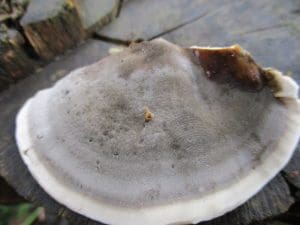
Smell:
Not distinctive
Spores
white
Uses for the Smokey bracket
Although classed as Edible I would personally class it as Inedible, it’s just so tough
Conservation Considerations
Very common
Smokey bracket Could Be Confused With…
Turkey tail Trametes versicolour which is also a polypore bracket with bands of colour, but turkey tail has a white underside ( fertile side ) where as smokey bracket has grey.
Caution and known hazards
None known
Resources



